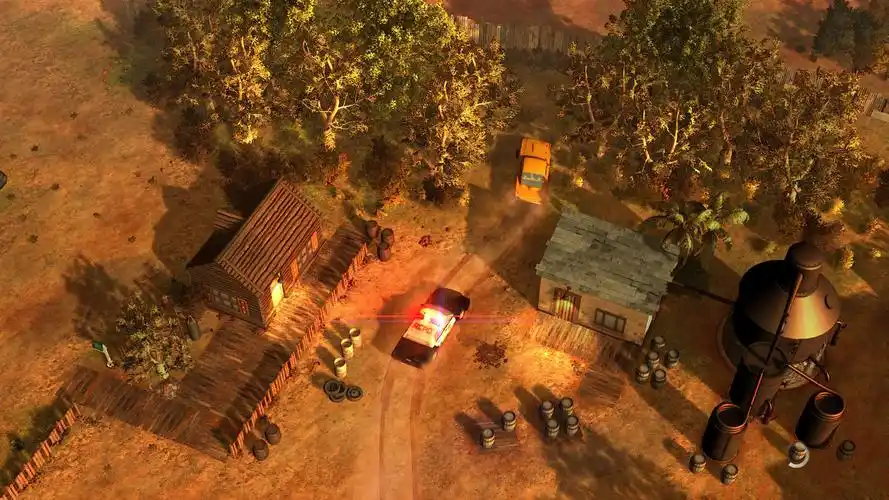Title: A Comprehensive Analysis of Current Deep Game News Topics: Innovation, Disruption, and Community
The video game industry is no longer a niche entertainment sector; it is a dynamic, multi-billion-dollar behemoth that constantly evolves at a breakneck pace. To understand its trajectory, one must look beyond surface-level release announcements and delve into the deeper currents shaping its future. This analysis explores the most significant contemporary topics, from technological paradigm shifts and business model disruptions to the intensifying discourse on sustainability and community trust.
1. The Generative AI Revolution: Creativity Tool or Existential Threat?
The most disruptive force currently rippling through the industry is the rapid advancement of generative artificial intelligence. This topic dominates developer conferences, investor calls, and ethical debates.
On one hand, AI presents unprecedented tools for enhancing development efficiency and creativity. Procedural generation is being supercharged, creating vast, unique worlds that would be impossible to build manually. AI-powered non-playable characters (NPCs) are evolving from scripted automatons into entities with simulated memory and context-aware dialogue, promising deeper immersion and emergent storytelling. For indie studios, AI tools for generating concept art, code snippets, and sound effects can significantly lower barriers to entry, democratizing game development.
However, the rise of AI is fraught with controversy. The primary concern revolves around the data used to train these models. Many are trained on vast datasets of existing art, code, and writing scraped from the internet without explicit creator consent, leading to widespread accusations of intellectual property theft and copyright infringement. This has sparked legal battles and fierce opposition from artists and writers who fear for their livelihoods. Furthermore, an over-reliance on AI could lead to a homogenization of artistic expression, draining games of their unique soul and human touch. The industry is grappling with a critical question: will AI serve as a collaborator that augments human creativity, or will it become a cost-cutting tool that devalues artistic professions and floods the market with derivative content?
2. The "Live Service" Reckoning: Sustainability and Player Fatigue
The live service model—games designed as ongoing platforms with continuous content updates, battle passes, and in-game stores—has been the dominant revenue driver for major publishers for nearly a decade. However, 2023 and 2024 have seen a significant reckoning.
A string of high-profile failures, from the abrupt shutdown of Suicide Squad: Kill the Justice League to the rapid player decline of Skull and Bones, has exposed the model's pitfalls. The market is becoming oversaturated, and players are increasingly suffering from "live service fatigue." The commitment required to keep up with multiple games' seasonal content, battle passes, and daily chores is being perceived as a predatory "second job" rather than fun.
This has led to a strategic pivot. Publishers are now emphasizing "quality over quantity," focusing on ensuring a game's core loop is rock-solid at launch and that its post-launch roadmap is sustainable and genuinely adds value, rather than just functioning as a content treadmill. The conversation is shifting from player retention at all costs to building a respectful, long-term relationship with a community. The success of games like Helldivers 2 demonstrates that the model can work, but only when the gameplay is exceptional and the monetization feels fair and non-exploitative.
3. The Ascendancy of the "Composable Game" and Platform War
A subtle but profound shift is occurring in how games are distributed and played. The concept of the "composable game"—where players can mix and enjoy content from various creators within a single platform—is gaining traction, primarily exemplified by Fortnite through its Unreal Editor and Lego, Rock Band, and Racing modes.
Epic Games is no longer just developing Fortnite; it is building a multi-faceted metaverse platform. This strategy aims to make Fortnite an indispensable utility, a place where users spend time regardless of what specific "game" they are playing within it. This challenges the traditional model of standalone $70 titles and positions platforms, not individual games, as the primary point of player engagement.
This move triggers a new front in the platform wars. Companies like Xbox, Sony, and Roblox are all investing in similar ecosystem strategies, competing to become the dominant hub for digital social interaction and play. The battle is no longer just about console sales; it's about capturing user time and attention within a walled-garden ecosystem where all transactions flow through the platform holder.
4. Intensifying Scrutiny on Labor Practices and Unionization
The human cost of game development is finally receiving the spotlight it deserves. The massive industry-wide layoffs of 2023 and 2024, which affected tens of thousands of highly skilled developers despite record company profits, have shattered the illusion of stability. This has acted as a catalyst, accelerating a powerful movement: unionization.

Workers at major studios like Sega of America, Zenimax, and Blizzard Albany have successfully unionized, driven by demands for better job security, fair compensation, cruncher prevention, and a say in the development process. This represents a fundamental shift in power dynamics. The narrative is changing from celebrating the "passion" of developers who endure brutal conditions to demanding their rights as workers. This trend will continue to force publishers to adopt more ethical and sustainable management practices, as the cost of negative PR and operational disruption from labor actions rises significantly.
5. Remakes, Reboots, and the Value of Legacy
Amidst technological and business model upheaval, there is a powerful counter-trend: the embrace of gaming's past. The critical and commercial success of faithful remakes like Final Fantasy VII Rebirth and Resident Evil 4 demonstrates a huge appetite for revisiting classic stories with modern technology.
This is more than just nostalgia; it's a recognition of strong foundational IP and quality game design that stands the test of time. For publishers, it mitigates risk in an increasingly expensive development landscape. For players, it offers a known quantity of quality in a sea of uncertain live-service ventures. However, this trend also raises questions about artistic innovation. Is the industry becoming overly reliant on its back catalog, potentially stifling the creation of new, original IP? The challenge lies in striking a balance between honoring legacy and fostering the new ideas that will define gaming's next era.
In conclusion, the deep game news topics of today paint a picture of an industry at a complex crossroads. It is simultaneously embracing a transformative yet controversial technology, reevaluating its most profitable business models, navigating new platform dynamics, fighting for the rights of its workforce, and wrestling with its own history. The studios and platforms that succeed will be those that navigate these deep currents with a commitment to ethical innovation, sustainable practices, and, above all, a genuine respect for their players and creators.


















